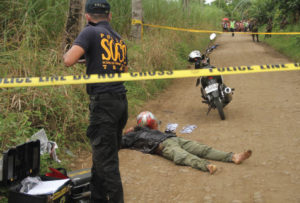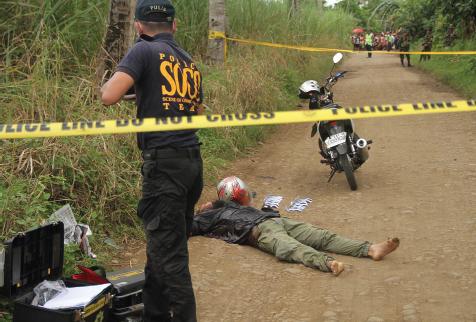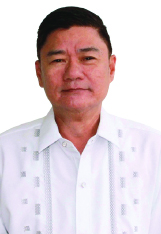
TACLOBAN CITY- A joint intelligence operations conducted by police and military operatives resulted in the death of a suspected ISIS-linked member in Ormoc City.
Killed was Joseph Anulga Jr., who was reportedly into gun running activity, after he resisted arrest during a buy-bust operation with members of the Criminal Investigation and Detection Group (CIDG) along sitio Lawis of Barangay Airport about 8 am on Thursday (November 22).
CIDG Northern Leyte Chief P/Supt Marvin Pedere said that Anulga, who was also known as Dawud, pulled a caliber .45 pistol and tried to shoot it out with the operatives when he sensed that he was dealing with police operatives.
But other operatives, who acted as security to the buy-bust, shot the suspect, hitting him at his head which resulted to his instant death.
Supt. Ma Bella Rentuaya, regional spokesperson of the Philippine National Police, said Anulga resisted arrest during the buy-bust operation conducted by Criminal Investigation and Detection Group in connection with his gun running activities.
Recovered from Anulga were two units of caliber .45 pistol, one improvised explosive device, P10,000 used to procure the firearm, and one motorcycle.
Brigadier General Lope Dagoy, commanding officer of the 802nd Brigade based in Ormoc, said that Anulga is set to go on “Hijirah” to join the local terrorist group in Mindanao and intends to die as a martyr of Islam.
Anulga was said to have pledged allegiance to Daesh and its recognized caliph, Abu Bakr Al Baghdadi.
“Anulga is a direct associate of the late Yusuf Macuto. Macuto was involved in a foiled plot to bomb the US Embassy last November 2016 and the main suspect in the Hilongos(in Leyte) bombing last December 2016, and was killed during the Marawi siege,” said Dagoy in a press statement.
“Anulga’s death shows the government’s conviction in protecting the people from these lawless elements. This is a clear message that your AFP and PNP will not allow neither tolerate terror groups in our midst,” he added.
Ormoc City Mayor Richard Gomez, in a message he posted on his Facebook account, maintained that the government “will not tolerate any acts and personalities who can and may bring harm and terrorism in Ormoc.”
“The PNP and the Army will work hard to take them out of our city by all means,” he said.
Meanwhile, businesswoman Lalaine Marcos of Rotary Club of Ormoc Bay thanked the police and military for acting right away against Anulga.
“I think Ormoc has nothing to worry about the incident. This shows that our Army and PNP are getting A-1 intelligence (report) that is why the alleged ISIS member was caught. We are very proud that Ormoc is the safest city in the Philippines and want to keep it that way,” she said.
(RONALD O. REYES)


